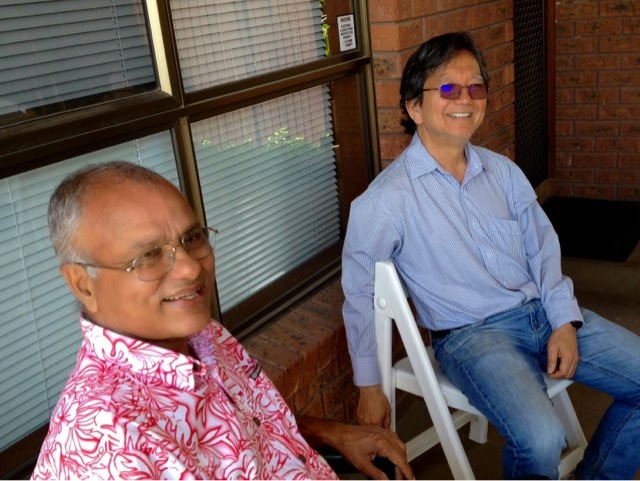As I look at our Downunder Travel Blog, I'm surprised about how much we managed to see and do during our brief visit here. In fact, not all activities have been recorded; there have been countless conversations, lunches, coffee & tea in the afternoons, walks and talks in Sydney and Melbourne, and just plain admiring the Mooroolbark hills and the ever present bird sightings and calls from these most vocal Australian birds.
On Monday we had a bonus rendezvous-vous with Alaina, the delightful daughter of a former World bank colleague, David McMurray. During our last few days here, I finally contacted David to see if he, by chance, might be in Australia (he's from Canberra). As it turns out, I found out that he was shivering in Washington, D.C.. (Alexandria, VA), but that his daughter, Alaina, was here in Melbourne. So we met at a little café in a laneway near Flinders station, and had an enjoyable chat with her. It was like having a shot of optimism, knowing that here was one more thoughtful young person to help make this a better world.
Wei, Alaina, Virginia (Sin Yi), and David in the Melbourne cdb
Later in the evening we met Sid & Candice, Sugat & Sarah, and Amit & Sarah at an excellent Neapolitan restaurant, 400 Gradi on Lygon Street in the Brunswick area of Melbourne. The menu was extensive; everything from the pizza from the wood-fired oven to the linguine vongole was authentic. The wine list had several southern Italian wines; we settled on the Falanghina white from Molise. Unfortunately, I forgot to take a photo of this convivial group...but it was one of our memorable dinners with the relos.
For our last night as guests in Sin Ling and Ron's house in Mooroolbark, we'll have the last supper this evening. The barbie is on, wine is chilled, and heaps of relos will be here to share the last day of our second summer.
We've been lucky to have all of the family here in the Melbourne area to cook meals and cater to our needs (including Ron's chauffeur service) and their love and time during our stay. I hope we can reciprocate sometime.
Here are a few photos...then I'll sign off from the Downunder blog...except, perhaps for an epilogue.
Albert, David, and Chris








































